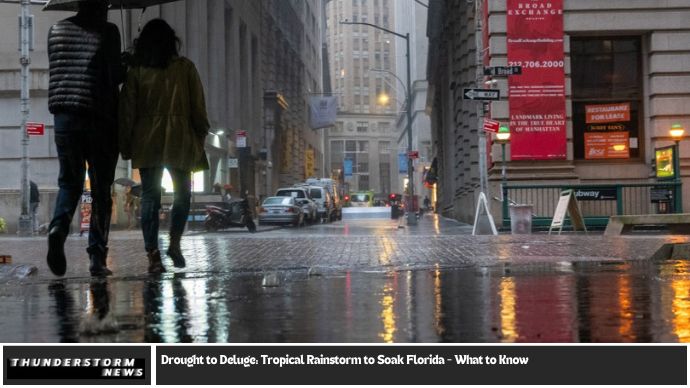When we think about the environment and conservation efforts, we often picture large-scale projects like reforestation or wildlife protection. However, one of the most crucial players in maintaining the health of our natural landscapes might be closer than we think: tree surgeons. These highly skilled professionals are not just concerned with pruning and removing trees—they play a pivotal role in preserving and enhancing the health of our environment.
Tree surgeons, also known as arborists, are experts in tree care, and their work directly impacts biodiversity, carbon sequestration, and ecosystem health. Their commitment goes beyond aesthetics and safety. By understanding the needs of trees, diagnosing diseases, and implementing tree care best practices, tree surgeons ensure the longevity and vitality of trees, which in turn, benefits the environment in numerous ways. In this blog post, we’ll delve into the vital role tree surgeons play in environmental conservation and how their expertise can help mitigate environmental challenges.
Understanding the Role of a Tree Surgeon
A tree surgeon is a professional who specializes in the health, care, and maintenance of trees. Their job involves everything from planting and nurturing trees to diagnosing diseases, trimming, and even removing trees when necessary. But what sets tree surgeons apart from general landscapers or gardeners is their deep understanding of arboriculture—the study of trees.
Tree surgeons are equipped with advanced knowledge of tree biology, pests and diseases, and the various techniques required to preserve tree health. They use their expertise to make informed decisions on pruning, cabling, and even the complete removal of trees that are beyond repair. Essentially, tree surgeons act as the caretakers of trees, ensuring they are well-maintained and able to thrive for years to come.
Tree Surgeons and Biodiversity Conservation
One of the most important ways that tree surgeons contribute to environmental conservation is through their role in protecting and enhancing biodiversity. Trees are a vital part of ecosystems, providing shelter, food, and oxygen for countless species. Healthy trees help sustain biodiversity by supporting a variety of plant and animal life.
Tree surgeons help maintain this balance by keeping trees healthy and preventing the spread of disease. For example, they can spot early signs of pests like the emerald ash borer or fungal diseases that threaten tree populations. By treating trees before the problem spreads, tree surgeons help prevent the collapse of entire ecosystems. Additionally, by promoting healthy growth, they ensure that trees continue to provide essential services such as air purification and wildlife habitats.
Tree Surgeons in Climate Change Mitigation
As the effects of climate change continue to intensify, the role of trees in mitigating these impacts has never been more crucial. Trees absorb carbon dioxide (CO2), a major greenhouse gas, from the atmosphere and store it in their biomass. This process, known as carbon sequestration, helps reduce the overall carbon footprint.
Tree surgeons play an essential part in this process by ensuring that trees remain healthy and are properly maintained. When trees are sick or weakened, they are less efficient at sequestering carbon. Tree surgeons work to protect the trees that serve as carbon sinks, ensuring they stay healthy and capable of absorbing CO2 for years to come. Additionally, they can help plant new trees that will further contribute to climate change mitigation.
Tree Surgeons and Forest Management
Another crucial aspect of environmental conservation is forest management. Forests are complex ecosystems that require careful management to thrive. Tree surgeons play a key role in forest health by managing both individual trees and entire forests.
In managed forests, tree surgeons help with thinning, selective cutting, and planting. These practices ensure that the forest remains diverse and resilient to pests, diseases, and other environmental stresses. By working in partnership with forest managers, tree surgeons help ensure that forests continue to provide essential services, including oxygen production, water filtration, and habitat for wildlife.
The Importance of Tree Preservation in Urban Areas
Urbanization has led to the decline of natural habitats, and as cities expand, green spaces become increasingly valuable. Trees in urban areas provide a multitude of environmental benefits, including shade, pollution reduction, and noise abatement. Tree surgeons are instrumental in preserving and enhancing the urban canopy.
They take care of street trees, park trees, and trees in residential areas, ensuring they are healthy and properly maintained. By diagnosing diseases, trimming branches, and providing tree care advice, tree surgeons help urban trees survive the stresses of city life, such as air pollution, soil compaction, and limited space for root growth. These efforts ensure that trees in cities continue to provide environmental benefits, contribute to mental well-being, and support biodiversity.
How Tree Surgeons Support Sustainable Practices
Sustainability is at the heart of tree surgery, as it involves long-term planning and care. By focusing on the health and longevity of trees, tree surgeons support sustainable practices that benefit both the environment and future generations.
Tree surgeons advocate for using native tree species, which are better suited to local climates and ecosystems. They also recommend planting trees in areas where they can have the most impact on environmental conservation, such as in urban heat islands or along riverbanks to prevent soil erosion. Additionally, tree surgeons are increasingly involved in promoting the use of sustainable tree care products, such as organic fertilizers and non-toxic pest control methods, which help reduce the environmental impact of tree maintenance.
Preventing Deforestation with Tree Surgeons
Deforestation remains one of the most pressing environmental challenges, contributing to habitat loss, climate change, and reduced biodiversity. While reforestation is an important solution, tree surgeons also contribute to preventing deforestation by ensuring that healthy trees are preserved and managed responsibly.
Tree surgeons help communities and landowners understand the value of their trees and the importance of preserving them. By advising on the best tree care practices and providing expertise in forest management, tree surgeons play a proactive role in reducing the need for clear-cutting and promoting responsible tree harvesting practices.
The Connection Between Tree Surgeons and Local Communities
Tree surgeons often work closely with local communities, educating residents about the importance of tree care and its environmental benefits. Through workshops, tree planting initiatives, and one-on-one consultations, they empower individuals to take action in their own neighborhoods.
By fostering a deeper connection between people and trees, tree surgeons help cultivate a sense of environmental stewardship. This encourages communities to preserve trees, plant new ones, and adopt sustainable practices that contribute to overall environmental conservation.
FAQs
1. What is the primary role of a tree surgeon?
A tree surgeon is responsible for maintaining the health of trees, diagnosing diseases, trimming branches, and ensuring that trees thrive in their environment.
2. How do tree surgeons contribute to biodiversity?
By maintaining healthy trees and preventing the spread of diseases and pests, tree surgeons help protect ecosystems and the diverse species that rely on trees for shelter and food.
3. Can tree surgeons help with climate change?
Yes, tree surgeons support climate change mitigation by ensuring trees are healthy and capable of absorbing carbon dioxide, thus contributing to carbon sequestration.
4. Why are tree surgeons important in urban areas?
Tree surgeons help preserve trees in cities, where they provide shade, reduce pollution, and support biodiversity. They ensure that urban trees are healthy and resilient to environmental stressors.
5. What role do tree surgeons play in forest management?
Tree surgeons assist in forest management by helping with thinning, selective cutting, and replanting, ensuring forests remain diverse, resilient, and healthy.
6. How can I become more involved in tree conservation?
Consider supporting local tree care efforts, attending workshops, and learning from tree surgeons. You can also plant trees, ensure proper care, and advocate for sustainable practices in your community.
Conclusion
Tree surgeons are more than just caretakers of trees; they are stewards of the environment. Their expertise not only helps preserve the health of individual trees but also ensures the well-being of ecosystems, the reduction of carbon emissions, and the protection of biodiversity. By maintaining healthy trees and supporting sustainable tree care practices, tree surgeons play an indispensable role in environmental conservation. Whether they’re working in urban areas, forests, or on individual properties, tree surgeons make a lasting impact on our planet’s future.







